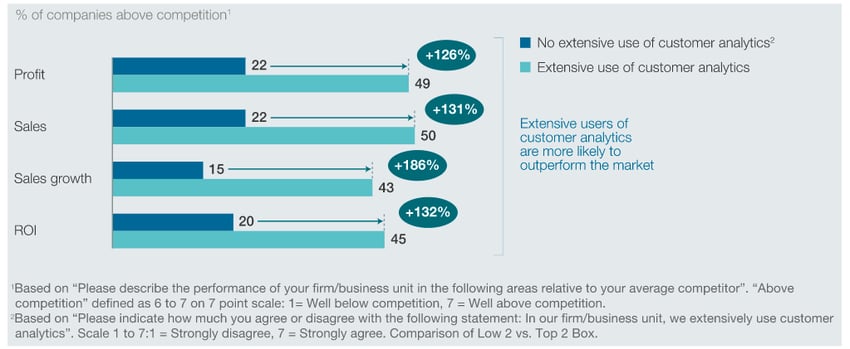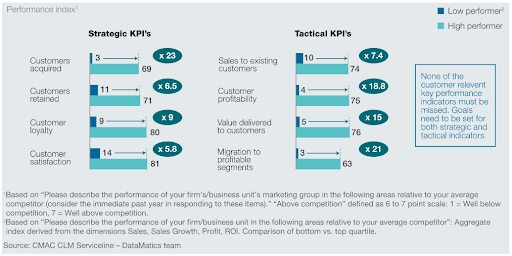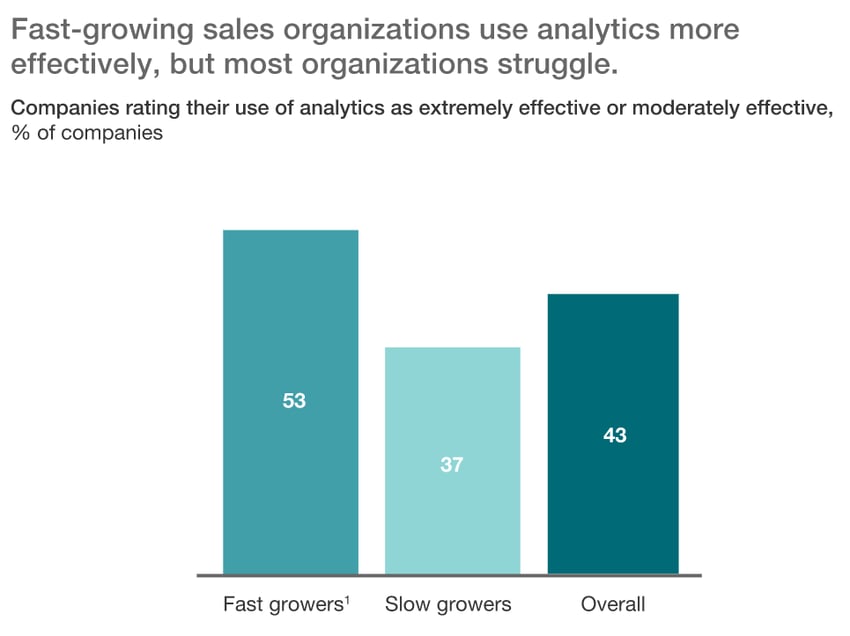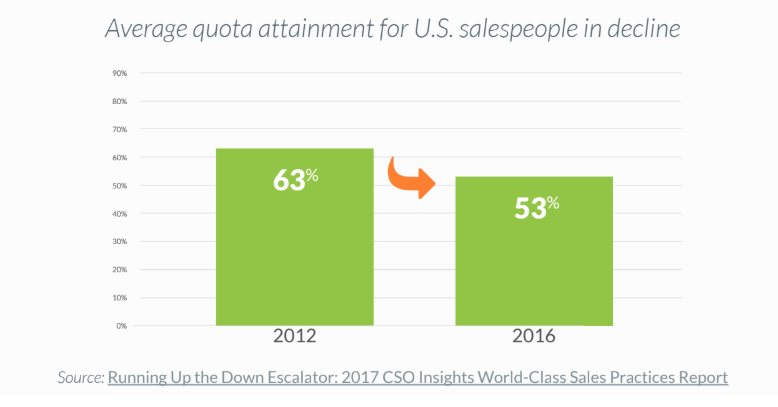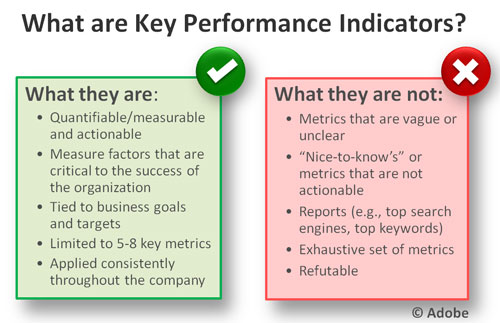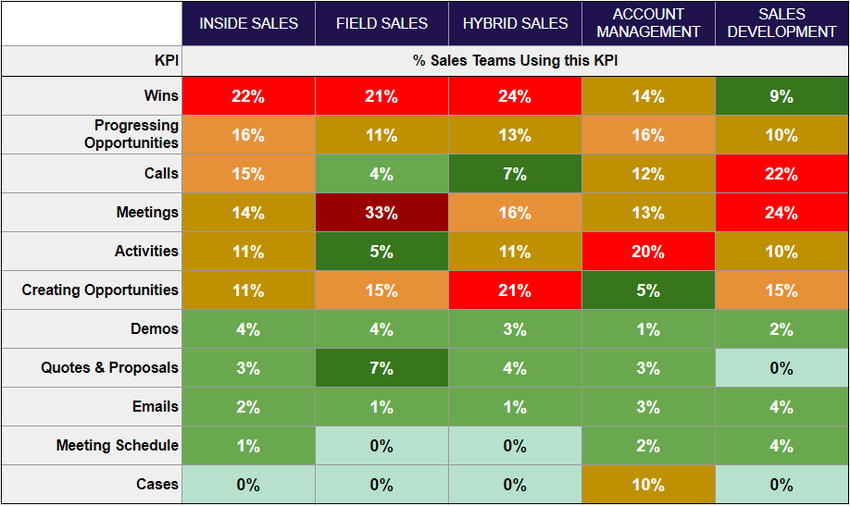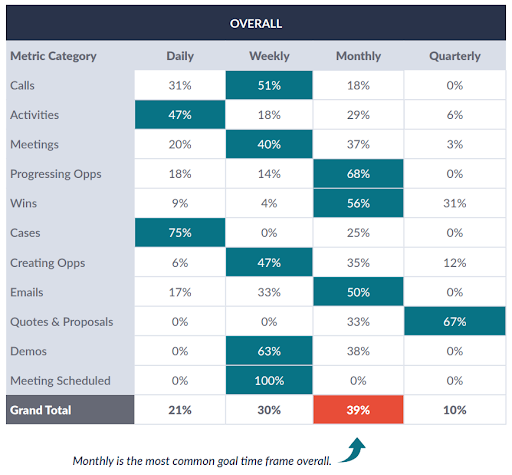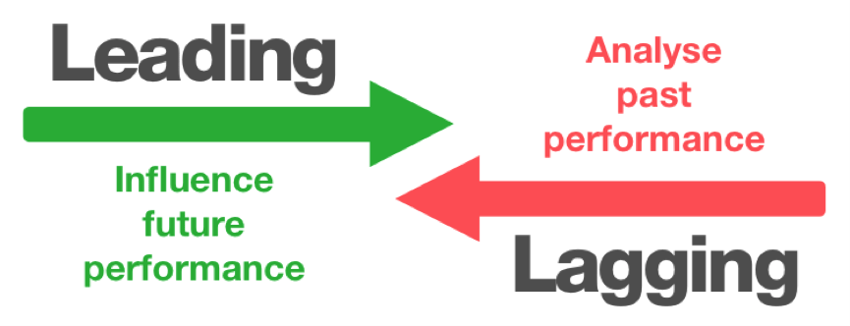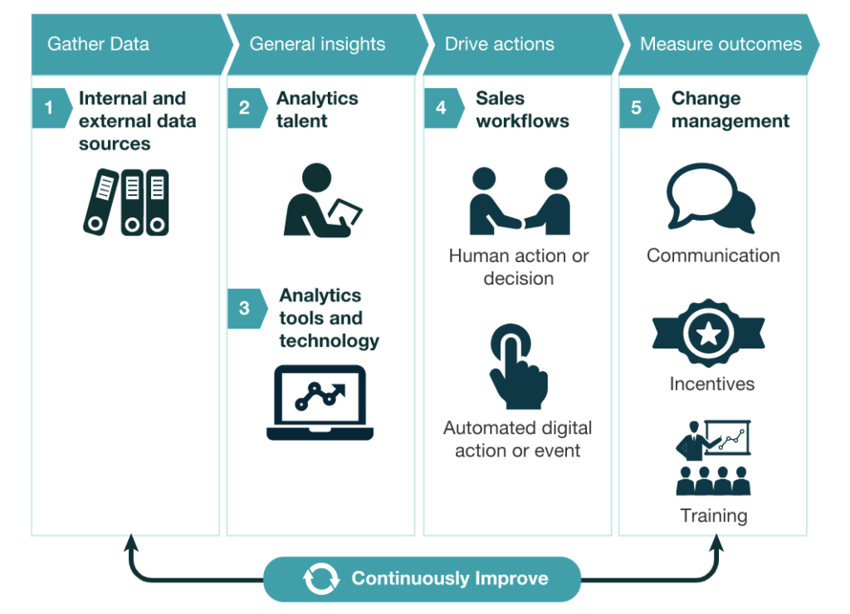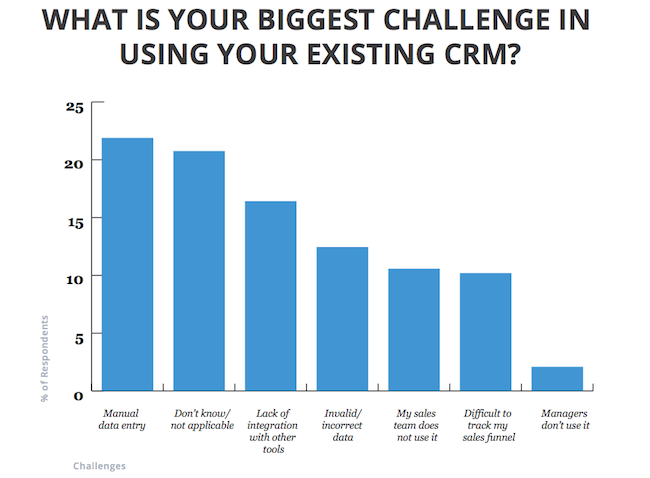Oftentimes, even if an organization does realize the importance of collecting data to measure key sales metrics, it’s still incredibly difficult to figure out exactly how to sift through all that raw data, make sense of it, and put it to good use.
To help you brainstorm different uses for data in your own organization, we’ve compiled a list of 10 ways top-performing sales organizations are utilizing their sales data and key sales metrics to generate more revenue and outmaneuver their competitors:
1. Disruption and innovation
In order to remain competitive, you must be able to quickly adapt to changing marketing conditions, trends, and customer demands. In such a dynamic, fast-moving business environment, a well-designed sales analytics program could easily become your competitive advantage.
Reliable data allows you to accurately predict changes in the marketplace. With this foresight, you can disrupt your own organization, leverage the latest technology to create innovative, new business models, and better meet the needs of your customers before a more nimble, data-driven competitor does.
In every industry, the winners of the future will be the organizations that can leverage data to identify market changes quickly and be the first to respond with solutions that best meet customer needs.
2. Predictive sales forecasting
One of the most obvious benefits of tracking sales metrics is the ability to predict future sales based on historical data. Unlike ambitious goal-setting, historical data gives you an accurate and realistic picture of how much revenue your team should be generating within a certain time period.
In addition, AI sales tools can now relate your current transactional and customer interaction data (emails, meetings, phone calls, etc.) to actual sales outcomes in order to predict future revenue to an extremely high degree of accuracy.
When you can accurately forecast what revenue will be and spot risks early, you can use that knowledge to allocate resources and manage your workforce more efficiently. In addition, cutting waste enables your organization to be more agile so you can quickly respond to changing market conditions.
Historical sales data also allows you to compare your organization’s performance to industry averages to see if you’re on track. If you discover that your sales metrics do not align with industry averages, you can now begin the process of identifying the root cause and making the necessary corrections.
3. Territory coverage
One of the more advanced ways of utilizing sales data to maximize efficiency and optimize resources is to discover and fill gaps in the coverage of assigned sales territories.
Top-performing sales organizations look for signs that sales activity in each territory may either be too narrow in scope, or not deep enough in key accounts or opportunities.
They use transaction and customer data to first define each territory. Then, each territory is reviewed to ensure they have sufficient resources to meet company goals.
Once territories are defined, sales strategies are deployed, further data is collected, and territories are realigned accordingly.
4. Positioning
By becoming data-driven, you can ensure that you are always saying the right thing, to the right customer, at the right time.
Most organizations find it extremely challenging to develop value propositions that are effective at convincing each segment of customers they target to buy from them. While most companies opt for a one-size-fits-all approach, data-driven companies are able to test many different value propositions on different segments of customers to identify which are the most effective.
By collecting and cross-referencing many data points, it’s possible to build highly-personalized value propositions tailored to the specific needs of each customer segment.
Another challenge is setting the price of new products and services to ensure maximum sales and revenue. Using market data and dynamic-pricing engines, companies can test many different price points to determine what the optimal price is for each solution, and even for each segment of customers.
Some companies have discovered that, in order to maximize revenue, they actually needed to raise prices. While price increases may cut the number of potential sales, by growing the average size of each sale, you may be able to achieve an increase in overall revenue.
5. Product portfolio management
Sales metrics provide many valuable insights that your organization can use to cut costs and improve your product offerings.
By analyzing transactions, you can spot products whose sales are under-performing overall, or under-performing in certain customer segments. Then, you can investigate why they are under-performing, and use the feedback from customers to refine products to better meet their needs.
In addition, you might determine that some products are no longer worth producing or supporting. By cutting these under-performing products, you can decrease costs, and focus more time and resources on products that drive the most revenue and profits.
6. Performance management
By tracking and analyzing the right sales metrics, managers can be more effective at correcting performance issues, setting realistic sales goals, incentivizing high performers, and motivating their team.
When sales managers have reliable data, they can create a sales forecast for each, individual sales rep, and compare their current performance to their performance in the past.
If a sales rep has unusually low performance, sales managers can focus more time on coaching and training that sales rep.
On the other hand, if a sales rep has unusually high performance, sales managers can now acknowledge and reward that rep’s hard work.
7. Customer retention
According to research by Esteban Kolsky, 67% of customers report bad experiences as a reason for churn, but only 1 out of 26 unhappy customers complain.
Many companies use historical customer data to identify the top factors that cause customers to churn, and spot at-risk accounts so they can proactively reach out to those customers to address their concerns and make sure they are thoroughly satisfied.
In addition, you can analyze your transactional data to identify large and growing accounts so that you can focus on taking care of them to ensure the highest customer satisfaction and retention rates possible.
This also includes identifying customers who have signed up for a trial of your product, but haven’t begun using it. When you are able to identify these accounts in the trial stage, you can reach out to them, offer assistance or tutorials, and help them immediately see the full value of using your product.
8. Product recommendations
By comparing customer data to transactional data, you can identify which products and services each of your leads is most likely to be interested in.
You can also identify highly-relevant, new products to recommend to your existing customers based on the kinds of products they’ve purchased in the past.
According to McKinsey, a full 35% of purchases on Amazon come from these kinds of highly-personalized product recommendations.
9. Lead scoring and prioritization
By analyzing demographic, transactional, and customer interaction data, you can now segment leads in your pipeline based on how profitable they are likely to be and how engaged they are (an indicator of how quickly they are likely to close).
Instead of wasting time reaching out to leads that aren’t likely to be interested in your products, AI algorithms can now use your sales data to generate a list of the most viable and profitable opportunities to contact first.
This data can also allow you to identify and fix weak points and bottlenecks where leads are getting stuck in the sales process, or falling out of your pipeline completely.
10. Segmentation and targeting
By utilizing data to improve the targeting of your advertising efforts, you can avoid wasting money targeting customers that aren’t likely to be a good fit for your company.
Based on data points you have on your most profitable customers, you can now target and acquire more customers only if they exhibit similar behaviors and characteristics, maximizing the return on your marketing spend.
Over time, you can also gather data on which types of marketing collateral is most effective at converting different types of customers. You may learn that some customers prefer short, concise sales presentations, and other customers prefer more in-depth, detailed demonstrations of the product.
All of this information can be used to tailor your marketing and sales efforts, reduce waste, cut down the sales cycle, and drastically increase revenue and profits.
